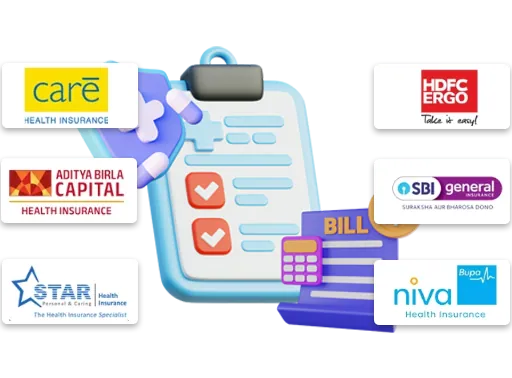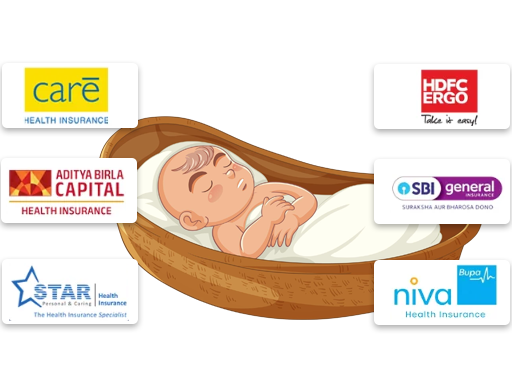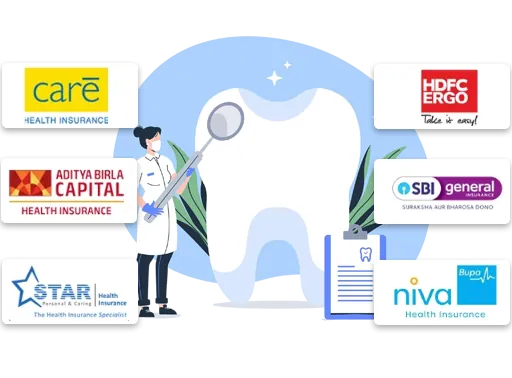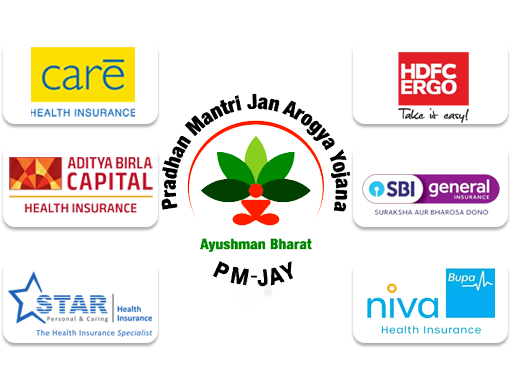- What Is Incurred Claims Ratio
- Explore Incurred Claims Ratio
- ICR Vs CSR

Simran is an insurance expert with more than 4 years of experience in the industry. An expert with previous experience in BFSI, Ed-tech, and insurance, she proactively helps her readers stay on par with all the latest Insurance industry developments.
Reviewed By:

Anchita has over 6 years of experience in content marketing, insurance, and healthcare sectors. Her motto to make health and term insurance simple for our readers has proven to make insurance lingos simple and easy to understand by our readers.
Updated on Aug 30, 2024 4 min read




Incurred Claims Ratio And Health Insurance
‘You must research an insurer’s incurred claim ratio (ICR) ’ is a common advice you hear when purchasing health insurance. But why is it so important? What does it indicate, and how does it differ from the claim settlement ratio? We answer all these questions for you in this article. Stick around to find health insurers with the highest incurred claim ratio.
What Is Incurred Claim Ratio ( ICR)?
Every year, many Indians purchase health insurance plans. While some policyholders make one or more claims in a policy year, others may not make a single claim. The ability to settle claims makes a health insurer credible and decides their incurred claims ratio (ICR).
In simple words
‘Incurred claims ratio refers to the total net premiums paid by your health insurer to the policyholders in ratio to the net premiums collected by the health insurers in a financial year.’
To further simplify the concept, let’s say a health insurance company has an ICR of 90%, this means that the insurer pays 90 rupees to its policyholders for every 100 rupees of premium collected.
Check Incurred Claim Ratio Of Health Insurers
Each year the Incurred Claims Ratio data is published by IRDAI (Insurance Regulatory and Development Authority Of India). To check the Incurred claims ratio of health insurers in India simply visit PolicyX and check out the ‘Data Labs’ section to find out details about your health insurer.
General (Incurred Claim Settlement Ratio) and Life Insurers (Claim Settlement Ratio)
Note: Due to the nature of the data provided by IRDAI for 2022-2023, the following table displays Incurred Claim Settlement Ratios for General Insurance & Claim Settlement Ratios for Life Insurance.
| Company | Type | 2020 | 2021 | 2022 | 2023 |
|---|---|---|---|---|---|
| Acko General Insurance Ltd. | General Insurance | 93.49 | 93.65 | 97.2 | 83.88 |
| Bajaj Allianz General Insurance Co. Ltd. | General Insurance | 98.61 | 94.73 | 96.59 | 74.27 |
| Bharti AXA General Insurance Co. Ltd. | General Insurance | 92.17 | 92.81 | 0 | 0 |
| Cholamandalam MS General Insurance Co. Ltd. | General Insurance | 91.47 | 92.94 | 93.23 | 67.88 |
| Edelweiss General Insurance Co. Ltd. | General Insurance | 99.72 | 97.8 | 97.26 | 89.59 |
| Future Generali India Insurance C. Ltd. | General Insurance | 93.34 | 93.74 | 96.01 | 79.18 |
| Go Digit General Insurance Ltd. | General Insurance | 99.65 | 94.24 | 96.09 | 71.87 |
| HDFC ERGO General Insurance Co. Ltd. | General Insurance | 99.8 | 98.36 | 98.49 | 79.04 |
| ICICI Lombard General Insurance Co. Ltd. | General Insurance | 96.93 | 96.93 | 97.07 | 77.33 |
| IFFCO Tokio General Insurance Co. Ltd. | General Insurance | 81.67 | 82.57 | 89.38 | 111.18 |
| Kotak Mahindra General Insurance Co. Ltd. | General Insurance | 98.62 | 96.01 | 96.9 | 56.01 |
| Liberty General Insurance Ltd. | General Insurance | 97.84 | 95.57 | 97.3 | 74.17 |
| Magma HDI General Insurance Co. Ltd. | General Insurance | 95.4 | 93.63 | 92.34 | 72.1 |
| Navi General Insurance Ltd. | General Insurance | 98.7 | 99.99 | 99.99 | 59.28 |
| Raheja QBE General Insurance Co. Ltd. | General Insurance | 30.29 | 95.51 | 93.3 | 138.67 |
| Reliance General Insurance Co. Ltd. | General Insurance | 98.16 | 98.59 | 98.65 | 86.31 |
However, you must not rely solely on the incurred claim ratio of a health insurer to make a health insurance purchase decision. There are multiple other factors such as:
- Coverage features
- Riders
- Available sum insured
based on which you must opt for the best health insurance plan.
How Is Incurred Claim Settlement Ratio Calculated ?
The incurred claim ratio formula is denoted by ‘Net Claims Settled divided by Net Premium Collected’. Each year the incurred claims ratio is mentioned in the annual report published by IRDAI for all private, public, and stand-alone health insurers.
ICR = Net Claims Settled/ Net Premium Collected
How Is Incurred Claims Ratio Different From Claim Settlement Ratio ( ICR vs CSR)
There are subtle differences between the incurred claims ratio and the claim settlement ratio of health insurers.
| Incurred Claims Ratio | Claim Settlement Ratio |
|---|---|
| The ratio of total claims paid to total premiums received by health insurers | The ratio of total claims settled to total claims filed with the health insurer |
| An ICR between 50% to 80% is considered ideal | The higher the claim settlement ratio the better it is for the health insurer |
| The time taken to settle the claim is considered when calculating the ICR | The time taken to settle claims is not considered |
| Reflects the financial stability of a health insurer. Policyholders can understand the claim settlement capability through the incurred claims ratio | Showcases the claim settlement history of a health insurer throughout the years |
What Does the Incurred Claims Ratio Reveal About Health Insurers?
The incurred claims ratio is an indicator of the financial capacity of a health insurer. Read more to understand various ICR levels and what they indicate:
If Incurred Claims Ratio is 100% or more
A incurred claims ratio showcases that a health insurer has paid more in claims to the insurance holders than they have received in premium payments in a financial year.
This is not a good indicator for a health insurance company, corrective steps must be taken to change these conditions.
If Incurred Claims Ratio is 50% or lesser
This is a positive point for the insurance provider but a negative for the insurance holder. This indicates that the insurance company has collected more premiums than paying claims to insurance holders.
If the Incurred Claims Ratio is between 50 and 100%
This is considered an ideal situation for both policyholders and insurance providers. This indicates that the premiums collected by the insurance providers are being utilized correctly to pay claims to the policyholders.
It also showcases the availability of affordable health insurance plans by the insurance company.
The Final Verdict
Undoubtedly, it is important to consider factors like coverage features, sum insured, customer service, etc. Similarly, Incurred Claims Ratio is one of the many deciding factors in purchasing a health insurance plan. You must be aware of how it is calculated, how it can impact your health insurance coverage, and more.
To find out more about the incurred claims ratio, visit India’s trusted insurance aggregator PolicyX.com or connect with our insurance experts.
Consult for Personalized Insurance Advice

But how does it work?
Schedule a call with India’s number 1 trusted advisor with a 4.5+ rating on Google. We are not your average insurance agents. Our advisors are experts in their insurance knowledge and will give you the right information at the right time. The service is free of cost! Don’t worry, we won’t spam as we value your time.
Health Insurer Network Hospitals
Incurred Claims Ratio in Health Insurance : Faq
1. What Is ICR?
ICR stands for Incurred Claims Ratio. It is the ratio of total premiums collected by a health insurer in a financial year to the number of claims settled.
2. What is the ideal Incurred Claims Ratio for a health insurance provider?
An ideal incurred claims ratio range for all health insurance companies should be between 50 to 80%.
3. Should I consider ICR as a deciding factor when purchasing a health insurance plan?
Yes, you must consider the incurred claims ratio as the deciding factor before purchasing a health insurance plan along with features, sum insured, riders, and other benefits.
4. How does one calculate Incurred Claims Ratio for a health insurance company?
The formula to calculate the Incurred Claims Ratio is ‘Net Claims Settled divided by Net Premium Collected’.
Health Insurance Companies
Know More About Health Insurance Companies
Share your Valuable Feedback
0
Rated by 0 customers
Was the Information Helpful?
Select Your Rating
We would like to hear from you
Let us know about your experience or any feedback that might help us serve you better in future.


Written By: Simran Kaur Vij
Simran is an insurance expert with more than 4 years of experience in the industry. An expert with previous experience in BFSI, Ed-tech, and insurance, she proactively helps her readers stay on par with all the latest Insurance industry developments.
982-1723618445.webp)





 Reviewed By: Anchita Bhattacharyya
Reviewed By: Anchita Bhattacharyya



















Do you have any thoughts you’d like to share?